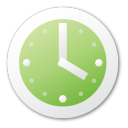Join us for the inaugural Live from Corinth webinar as the American School broadcasts from the Asklepieion Gallery of the Museum of Ancient Corinth.
Dr. Ioulia Tzonou, Associate Director of the Corinth Excavations, and Eleni Gizas, Steinmetz Family Foundation Museum Fellow, will discuss the healing cult of Asklepios in Ancient Corinth, the topography of the sanctuary, the ritual practices that took place therein, and the votive offerings and their meanings to the people who dedicated them to the god. By combining literary and epigraphic evidence, reliefs, and votive offerings from Ancient Corinth and other sanctuaries of Asklepios, the presenters will explore how people in Ancient Corinth faced the fear and uncertainty of ill health—sentiments that continue to resonate even today.
In the early 1930s, the Asklepieion, the sanctuary of the healing god Asklepios, was excavated by the American School in the northern limits of the ancient city of Corinth. In 1951, Carl Roebuck published the excavation results in the 14th volume of the Corinth series (Corinth XIV). These excavations showed that the sanctuary was used in the Classical and Hellenistic periods from the end of the 5th to the end of the 4th century B.C., when a temple to the god was enclosed by a colonnaded court. On a lower level, an open court called Lerna served as an area of recreation for the sick. The use of the site continued into the Roman period.
In eight deposits throughout the site, the excavators revealed up to 900 life-size terracotta anatomical votives. Remains such as these—with their focus on health and healing as a universal value across humanity's past, present, and future—are invaluable. Consequently, this assemblage is exhibited in a special room in the Museum of Ancient Corinth and plays a central role in the Corinth Excavations' outreach efforts.


